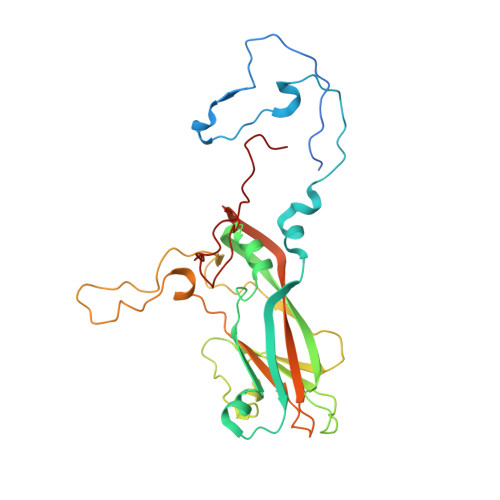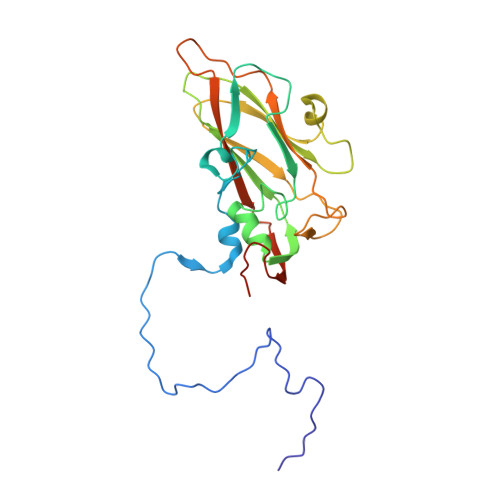A sialic Acid binding site in a human picornavirus.
Zocher, G., Mistry, N., Frank, M., Hahnlein-Schick, I., Ekstrom, J.O., Arnberg, N., Stehle, T.(2014) PLoS Pathog 10: e1004401-e1004401
- PubMed: 25329320
- DOI: https://doi.org/10.1371/journal.ppat.1004401
- Primary Citation of Related Structures:
4Q4V, 4Q4W, 4Q4X, 4Q4Y - PubMed Abstract:
The picornaviruses coxsackievirus A24 variant (CVA24v) and enterovirus 70 (EV70) cause continued outbreaks and pandemics of acute hemorrhagic conjunctivitis (AHC), a highly contagious eye disease against which neither vaccines nor antiviral drugs are currently available. Moreover, these viruses can cause symptoms in the cornea, upper respiratory tract, and neurological impairments such as acute flaccid paralysis. EV70 and CVA24v are both known to use 5-N-acetylneuraminic acid (Neu5Ac) for cell attachment, thus providing a putative link between the glycan receptor specificity and cell tropism and disease. We report the structures of an intact human picornavirus in complex with a range of glycans terminating in Neu5Ac. We determined the structure of the CVA24v to 1.40 Å resolution, screened different glycans bearing Neu5Ac for CVA24v binding, and structurally characterized interactions with candidate glycan receptors. Biochemical studies verified the relevance of the binding site and demonstrated a preference of CVA24v for α2,6-linked glycans. This preference can be rationalized by molecular dynamics simulations that show that α2,6-linked glycans can establish more contacts with the viral capsid. Our results form an excellent platform for the design of antiviral compounds to prevent AHC.
Organizational Affiliation:
Interfaculty Institute of Biochemistry, University Tübingen, Tübingen, Germany.






















